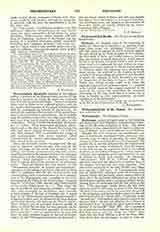

Prothonotary Apostolic, member of the highest college of prelates in the Roman Curia, and also of the honorary prelates on whom the pope has conferred this title and its special privileges. In later antiquity there were in Rome seven regional notaries, who, on the further development of the papal administration and the accompanying increase of the notaries, remained the supreme palace notaries of the papal chancery (notarii apostolici or protonotarii). In the Middle Ages the prothonotaries were very high papal officials, and were often raised directly from this office to the cardinalate. Sixtus V (1585-90) increased their number to twelve. Their importance gradually diminished, and at the time of the French Revolution the office had almost entirely disappeared. On February 8, 1838, Gregory XVI reestablished the college of real prothonotaries with seven members called “protonotarii de numero participantium”, because they shared in the revenues.
Since the sixteenth century the popes had also appointed honorary prothonotaries, who enjoyed the same privileges as the seven real members of the college; and titular prothonotaries, who held a corresponding position in the administration of the episcopal ordinariate or in the collegiate chapter. By the Motu Proprio “Inter multiplices” of February 21, 1905, Pius X exactly defined the position of the prothonotaries. These are divided into four classes: (I) the “Protonotarii apostolici de numero participantium” (members of the college of prelates), who exercise their office in connection with the acts of consistories and canonizations, have a representative in the Congregation of the Propaganda, and, according to the reorganization of the Curia by the Constitution “Sapienti consilio” of June 29, 1908, sign the papal Bulls instead of the earlier Abbreviators (q.v.). They enjoy the use of pontificals and numerous privileges, and may also, after examining the candidates, name annually a fixed number of doctors of theology and of canon law; (2) the “Protonotarii apostolici supranumerarii”, a dignity to which only the canons of the three Roman patriarchal churches (the Lateran) St. Peter’s, and St. Mary Major), and of cathedral chapters outside of Rome to which the privilege has been granted, can be raised; (3) the “Protonotarii apostolici ad instar [sc. participantium]”, who are appointed by the pope and have the same external insignia as the real prothonotaries; (4) the “Protonotarii titulares seu honorari”, who are found outside of Rome, and who may receive this dignity from the nuncios or as a special privilege. The privileges, dress, and insignia of the members of these four classes are exactly defined by the abovementioned Motu Proprio.
J. P. KIRSCH

